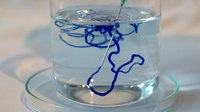
Photo from wikipedia
This study presents an analysis of the possible use of a viscose rayon (CV) fiber from textile industry wastes to develop a reinforced cementitious composite as an alternative for textile… Click to show full abstract
This study presents an analysis of the possible use of a viscose rayon (CV) fiber from textile industry wastes to develop a reinforced cementitious composite as an alternative for textile discharge valorization. Several techniques were used to characterize precursor fibrous waste material such as SEM, FT-IR, DSC, and TGA. The experimental studies were conducted based on a conventional cementitious mortar (control) and four different fiber contents (0.5, 1, 2, and 4 wt%). For mechanical behavior analysis, uniaxial compressive strength tests were carried out at different ages (7, 14, and 28 days after production). The results showed favorable CV fiber addition as reinforcement up to a maximum limit. The optimum concentration of fiber was 0.5 wt% (FRC0.5), which provided 28 days of higher compression strength. The addition of CV waste as reinforcement in cementitious matrix resulted in an improved compressive strength above 20.6% compared to the conventional non-reinforced mortar. Furthermore, CV fiber addition improved the ductile behavior of the new composite allowing a controlled failure, even after maximum rupture loading.
Journal Title: Journal of Engineered Fibers and Fabrics
Year Published: 2022
Link to full text (if available)
Share on Social Media: Sign Up to like & get
recommendations!